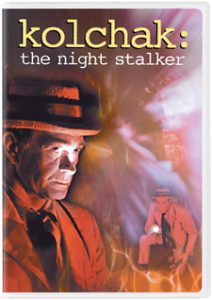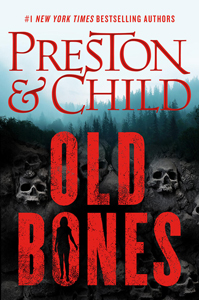In Douglas Preston and Lincoln Child’s co-authored debut “Relic” (1995), Agent Pendergast is already established in his career. The same goes for Lt. D’Agosta and other staples of their quarter century of novels. What’s particularly neat about “Old Bones” (August, hardcover) is we see the very first case of FBI Agent Corrie Swanson, whom we first met as a punkish Kansas teen in “Still Life with Crows” (2003).
Corrie’s learning process
P&C show the details of what it’s like for Corrie, who is described as “green” and “a rookie” and someone “hired out of high school.” Understandably, she doesn’t do everything right on this case, but we see her learning process. I like how her mentor at the Albuquerque field office, Morwood, points out that real-world cases aren’t like Robert Ludlum or Agatha Christie novels.
At the same time, we know Corrie is on to something when she discovers that multiple graves of the Parkin family line have been robbed around the world. I was thinking, “Yeah, but life is like a Preston & Child novel.”

“Old Bones” (2019)
Authors: Douglas Preston and Lincoln Child
Series: Nora Kelly No. 1
Genre: Mystery thriller
Setting: Contemporary, Western states
It’s also nice to catch up with Nora Kelly, an archaeologist who has buried herself in her work since the death of her husband, the reporter Bill Smithback. Frankly, I like her as a single person, sparking against Clive Benton, who is obsessed with uncovering the Donner Party mystery.
Fans will be well aware that Corrie and Nora both know Pendergast, but from different adventures. So the question of whether he’ll show up is a nice nugget, too. Whether he cameos or not, this isn’t a Pendergast novel, but that should not be a turn-off to readers.
In a way, we get back to basics here by checking in on Corrie, whose career is starting, and Nora, who is starting a new chapter of her life. A Pendergast novel is likely to be about Pendergast, but one without him can be about the mystery and the chilling centerpiece idea: in this case, cannibalism.
A peek into the Donner Party
The authors admit in the afterword that they have made up Donner Party members and details for the sake of this novel, but “Old Bones” is nonetheless a fascinating peek into this chapter of history. Multiple wagons’ worth of people set off in the 19th century from the Midwest to the wilds of California Gold Rush territory. A series of massive blizzards snowed them in in the Sierra Nevada Mountains. Eventually, they resorted to cannibalism.
As Nora asks on page 105: “What could be worse than cannibalism?” It’s a good point, and one wonders if “Old Bones” plays its hand too early with Clive’s recounted tales of the Donner Party’s journey, along with camp cook Maggie’s ghost stories.
They tell of people cooking livers and lungs and brains, and how people go mad during extreme starvation. Later, when the archaeologists examine the Lost Camp, they find skulls split open in cooking pots. However, the idea that there might be an aspect to the mystery that’s even darker than cannibalism hangs over the proceedings like a storm cloud.

P&C have taken us to the ends of the Earth in their novels, but “Old Bones” is intriguing because the Lost Camp is only 12 miles from a major interstate in California. But it’s fascinating to think about a place that’s so close to civilization yet untouched by man for nearly two centuries. I’m always bad at understanding the layout of mountain-based stories, but I got the gist of it here as the archaeologists settle between canyon walls near a creek to unearth the historical site.
“Old Bones” shouldn’t be taken as the ultimate account of Donner Party lore, as the authors admit, but it’s an entertaining primer. The book’s greatest value, though, might be launching another FBI agent’s career. Maybe future books will be labeled “A Corrie Swanson Novel.”

